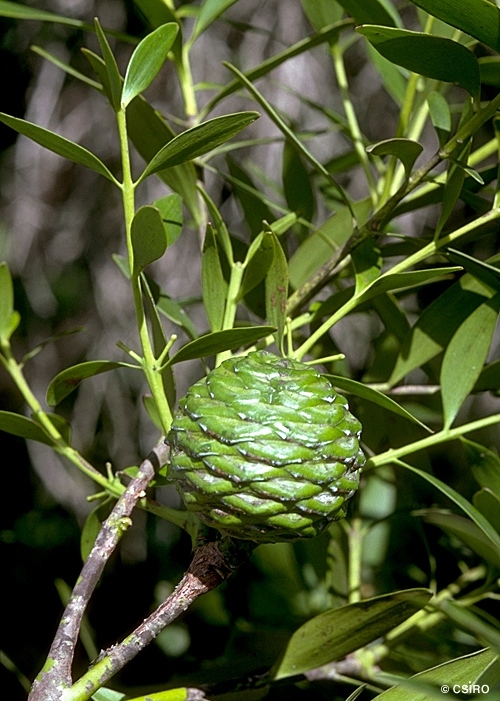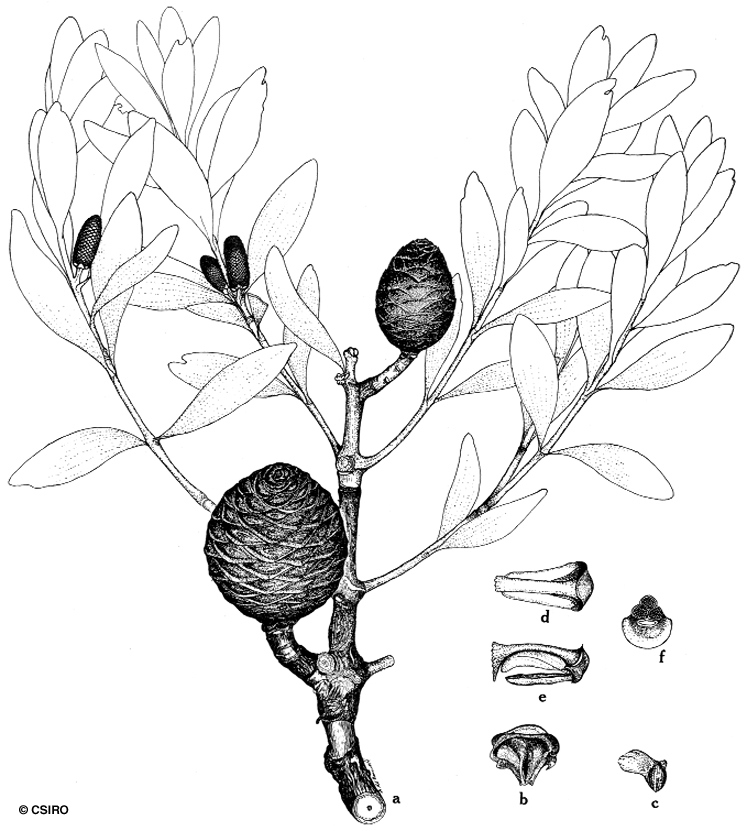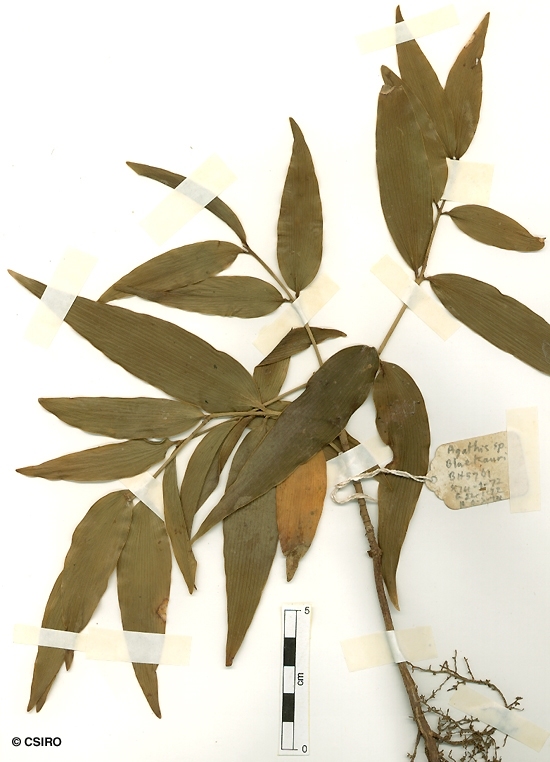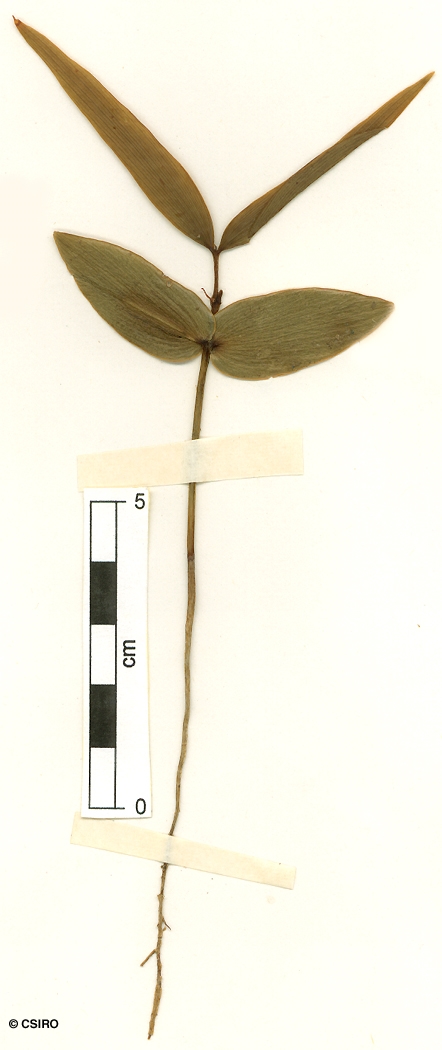Australian Tropical Rainforest Plants - Online edition
Agathis atropurpurea B.Hyland





Hyland, B.P.M. (1978) Brunonia 1(3): 109. Type: Hyland 5776, Bellenden Ker Range, Jan. 1972, Holotypus BRI.
Queensland Kauri Pine; Black Kauri; Blue Kauri; Kauri; Kauri, Black; Kauri, Blue; Kauri, Mountain; Kauri, North Queensland; Mountain Kauri; North Queensland Kauri; Pine, Queensland Kauri
Male cones less than 3 cm long, distinctly pedunculate. Scales slightly rounded at the apex and tending to overlap.
Cones usually less than 6 cm diam. each with about 90-150 scales.
Cotyledons lanceolate, a number of +/- parallel veins run from base to apex. Cataphylls are produced above the cotyledons and after lateral shoots are produced. At the tenth leaf stage: leaves lanceolate, apex acute, base cuneate or obtuse; venation fine and close, running parallel to the blade margin. Seed germination time 9 days.
Smaller trees of this species have a smooth to slightly flaky, dark coloured bark variously described as blue, purple or black. However, large trees have a brown, rough and flaky bark and in the past were mistakenly identified as Bull Kauri (Agathis microstachya). In the 1920's and 1930's a small industry developed gathering the resin of A. atropurpurea but it never assumed the dimensions of the industry in New Zealand and semi-fossilized swamp deposits were never discovered. The Queensland Forestry Department was reluctant to encourage the industry because resin collectors deliberately wounded the trees to encourage the resin flows.
The timber of this species has had a wide range of uses and is more or less comparable to Araucaria cunninghamii.
Wood specific gravity 0.48. Cause et al. (1989).





